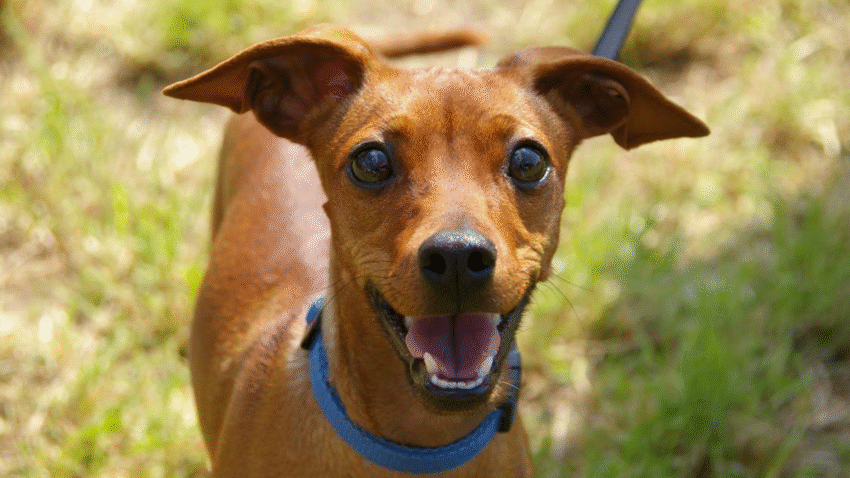Introduction
Does your dog shy away from new people, hide during loud noises, or freeze on walks? Fearful behavior is common in dogs who’ve had limited socialization, traumatic experiences, or simply a sensitive personality. The good news is that with patience and the right approach, you can help your fearful dog gain confidence and enjoy a happier, more secure life. This step-by-step guide will teach you how to build your dog’s confidence gently and effectively—at their pace.
Why Confidence Matters for Fearful Dogs
Confidence is key to helping dogs live a full and stress-free life. Without it, they may:
- Struggle to enjoy daily experiences like walks or meeting new people
- Exhibit fear-based behaviors like cowering, growling, barking, or biting
- Develop chronic anxiety or stress-related health issues
- Miss out on enrichment and healthy social interaction
Helping your dog feel safe and supported builds trust, reduces fear, and strengthens your bond over time.
Step-by-Step Guide to Building Confidence
1. Create a Safe, Predictable Environment
The foundation of confidence starts at home.
- Provide a quiet space your dog can retreat to—a bed, crate, or low-traffic room.
- Keep a consistent daily routine (mealtimes, potty breaks, walks).
- Avoid sudden changes in noise, people, or environment, especially in the early stages.
Structure and predictability help your dog feel more secure and less anxious.
2. Use Positive Reinforcement Only
Fearful dogs need encouragement, not pressure or correction.
- Reward calm or curious behavior with treats, praise, or toys.
- Avoid scolding or forcing your dog into scary situations.
- Be patient—every small step toward engagement or bravery is worth celebrating.
The goal is to make every experience a safe and positive one.
3. Start Slow With Desensitization
Desensitization is the process of slowly exposing your dog to fears at a distance or intensity they can handle.
- Identify your dog’s triggers (e.g., strangers, car rides, loud sounds).
- Expose them to the trigger from a safe distance where they remain calm.
- Reward them with treats and praise for relaxed behavior.
Gradually decrease the distance or intensity as your dog gains comfort.
4. Build Trust Through Choice
Fearful dogs gain confidence when they feel in control of their environment.
- Let your dog approach new people or objects on their terms—don’t force interactions.
- Give them options during walks (which direction to go, when to stop).
- Allow them to explore slowly and retreat when they need to.
This builds resilience and teaches them they can handle new experiences.
5. Teach Easy Commands for Success
Confidence comes from feeling capable. Teaching your dog simple cues can help them feel more in control.
Start with:
- “Sit”
- “Touch” (nose-to-hand targeting)
- “Watch me” (eye contact)
- “Come” (recall with treats)
Use short, fun training sessions with plenty of rewards. Mastering basic skills boosts confidence through success.
6. Encourage Exploration and Curiosity
Let your dog engage with the world at their own pace.
- Try sniff walks—slow, relaxed walks where your dog chooses where to go and what to explore.
- Introduce safe objects at home like cardboard boxes, new toys, or puzzle feeders.
- Reward any brave or curious behavior, even just sniffing something new.
Exploring builds independence and reduces fear over time.
7. Use Confidence-Boosting Activities
Certain games and activities naturally help dogs develop problem-solving and independence.
- Nose work or scent games (hide treats around the house)
- Puzzle toys or treat-dispensing balls
- Clicker training to mark and reward desired behavior
- Agility or obstacle courses (use broomsticks, boxes, and tunnels at home)
Mental stimulation builds confidence just like physical exercise.
Common Mistakes to Avoid
1. Pushing Too Fast
Exposing your dog to fears too quickly can backfire. Always move at a pace where your dog stays below their fear threshold.
2. Using Punishment or Force
Yelling, leash corrections, or forcing interactions will increase fear. Use kind, reward-based methods only.
3. Ignoring Body Language
Pay attention to early signs of fear, such as:
- Yawning
- Lip licking
- Tucked tail
- Whale eyes
- Freezing
Respect these signs to avoid overwhelming your dog.
4. Inconsistent Responses
Everyone in the household should follow the same training rules. Mixed messages confuse your dog and slow progress.
5. Expecting Quick Fixes
Confidence-building is a slow process. Expect setbacks and be ready to support your dog for the long haul.
Extra Tips & Recommendations
Tip 1: Keep a Progress Journal
Note what situations make your dog fearful, how they react, and how they improve. Look for:
- Triggers
- Coping strategies that help
- New behaviors (eye contact, tail wagging, relaxed posture)
Tracking progress helps you stay consistent and celebrate wins—even the small ones.
Tip 2: Stay Calm and Consistent
Your energy influences your dog’s emotions. Speak in a soft, calm voice and move slowly. Let your presence be a source of safety and stability.
Tip 3: Work With a Certified Trainer
If your dog’s fear is intense or persistent, consider hiring a certified professional dog trainer or fear-free behaviorist who specializes in anxiety or reactivity.
They can tailor a plan to your dog’s needs and guide you through advanced confidence-building techniques.
Tip 4: Use Calming Supports
Some fearful dogs benefit from calming aids such as:
- Adaptil diffusers or collars
- Calming treats or supplements (ask your vet)
- Thundershirts or anxiety wraps
These tools can help create a more relaxed state for learning and trust-building.
Conclusion
Helping a fearful dog gain confidence is a journey of patience, empathy, and small victories. With a safe environment, gentle exposure, and positive reinforcement, you can teach your dog that the world isn’t so scary after all. Every moment of trust earned is a building block toward a more relaxed, joyful life—for both of you.
📌 Bookmark this guide to support your dog as they grow braver, stronger, and more confident every day.
